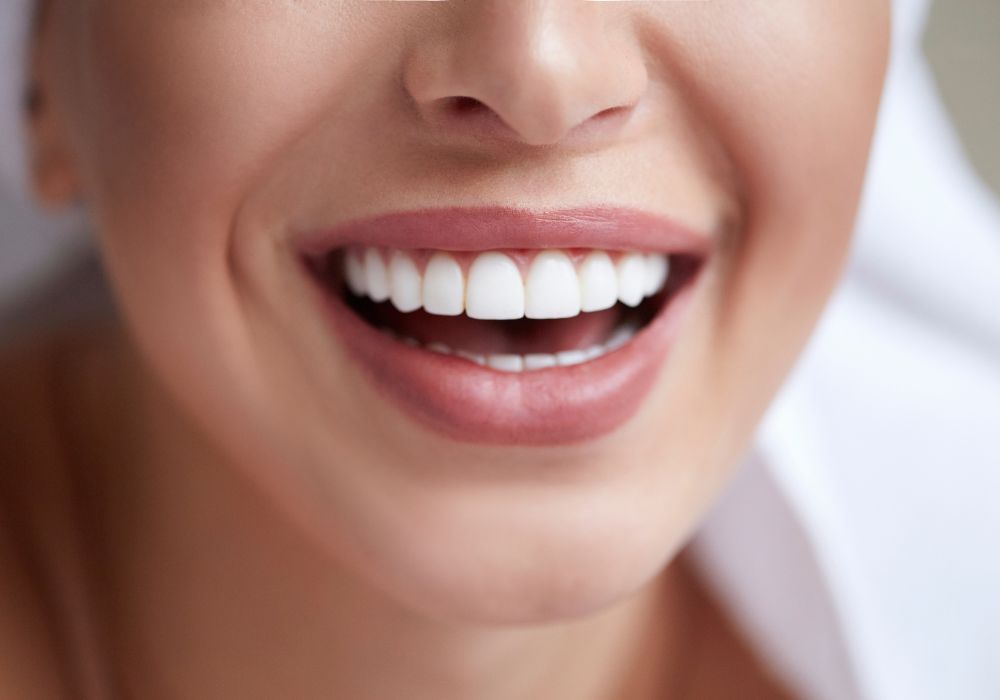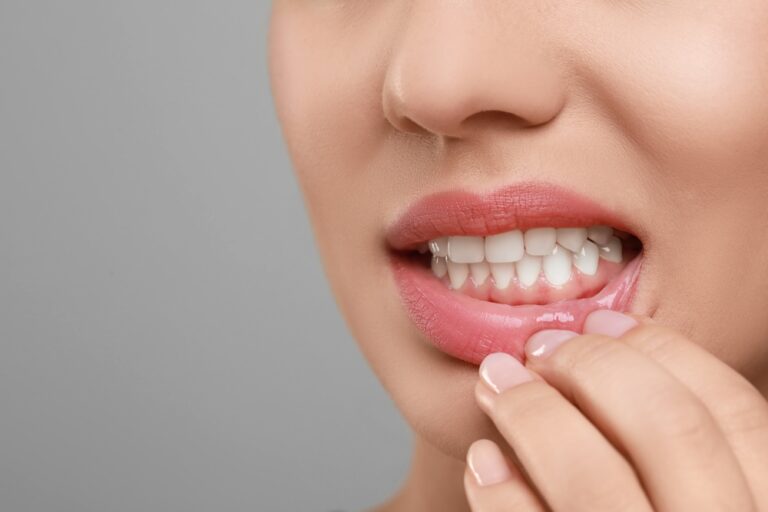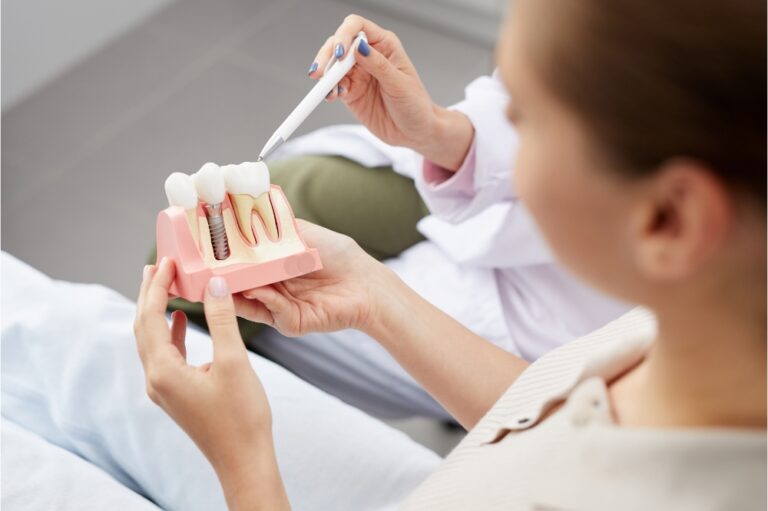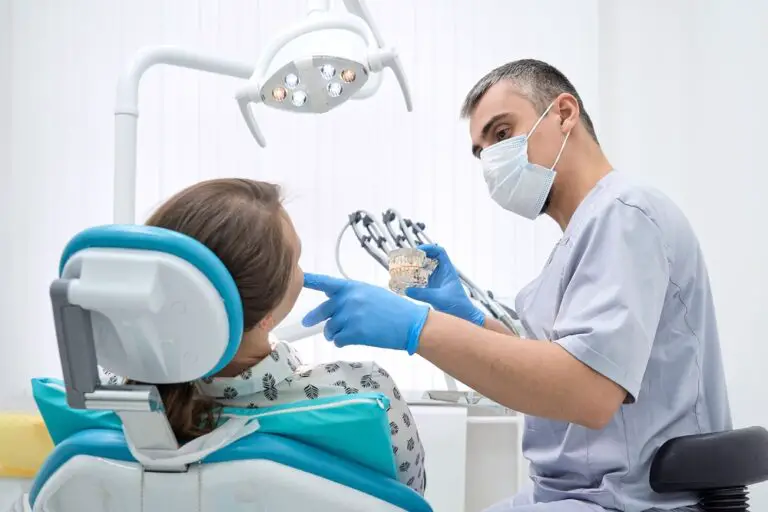Many adults wonder whether teeth can continue to develop later in life. While significant tooth development takes place during childhood and adolescence, experts confirm that teeth may still undergo subtle changes even after age 30.
Understanding how tooth anatomy can change throughout adulthood and the factors influencing development can help you make informed decisions about your oral health.
Tooth Development Basics
Before examining how teeth may continue developing, it helps to understand how teeth initially form and erupt.
Primary and Permanent Dentition
Humans have two sets of teeth that form at different life stages:
- Primary teeth – Also known as baby teeth or deciduous teeth, these are the first set of 20 teeth. Primary teeth start developing while still in the womb between 6-8 weeks gestation. The tooth buds continue slowly forming in the jaws until after birth. These teeth then gradually start erupting through the gums by around age 6 months to 1 year. This eruption process continues until finally all 20 primary teeth have come in by approximately age 3.
- Permanent teeth – Also referred to as secondary or adult teeth, these are the second set of 32 teeth. Permanent teeth begin forming under the gums while a child still has their primary teeth. The buds for permanent teeth develop from around age 4-5 months in utero until a few months after birth. However, permanent teeth do not start erupting until around age 6. This mixed dentition phase involves the permanent teeth slowly replacing the primary teeth. Permanent teeth continue developing and erupting until the late teens or early 20s when the last 4 wisdom teeth come in.
Parts of a Tooth
Teeth contain various tissues and structures that each serve important functions:
- Enamel – The hard, glossy, white outer layer of each tooth. Enamel is composed mainly of minerals like hydroxyapatite crystals that make it extremely dense and durable against biting and chewing forces. It is also the hardest substance in the human body.
- Dentin – The thick, yellowish layer underneath the enamel. Dentin is less mineralized than enamel but still quite hard and durable. It makes up the bulk of each tooth’s structure and pulp chamber. Dentin has tiny tubules extending from the pulp to the enamel that help transmit temperature changes and chewing pressure.
- Pulp – The innermost soft tissue containing blood vessels, nerves, and connective tissue. The pulp provides nourishment to the tooth, senses hot/cold stimulation, and can trigger pain signals if damaged. The pulp chamber runs through the center of the tooth, but in adults it gets smaller as more dentin fills in.
- Cementum – The thin, mineralized layer covering the dentin of the tooth root. Cementum provides some root structure and helps anchor the periodontal ligaments. It continues to slowly deposit over time.
- Periodontal ligament – The band of fibers attaching the tooth root to the surrounding alveolar bone socket. These ligaments securely anchor each tooth in place.
- Gingiva – The gum tissue surrounding the base of the tooth above the level of the bone and periodontal ligaments. Healthy gingiva seals and protects the tooth sockets.
The Process of Tooth Eruption
Eruption describes the process by which teeth emerge through the gums into the mouth. For both primary and permanent teeth, eruption occurs in stages over months or years:
- Initiation Phase – The tooth starts moving gradually towards the surface as the root finishes developing.
- Intraosseous Phase – The tooth moves through the jawbone as bone remodeling opens a path and the gums thin out.
- Mucosal Penetration – The tooth proceeds through the gingival tissue, rupturing blood vessels. Clot formation results in a bluish swelling under the gums.
- Emergence – The tooth crown fully penetrates through the gums and becomes visible in the mouth. The gums heal around the base of the crown.
- Maturation – Root development completes and anchors the tooth firmly into the jawbone. The gums contour and mature around the tooth.
Understanding this eruption process helps explain how teeth emerge into place. Problems during any phase can impede tooth development.
Do Teeth Continue Developing After Childhood?

While significant growth and development takes place earlier in life, experts confirm teeth may still change later in adulthood:
Continued Eruption
Teeth may gradually shift or erupt further due to progressive gum recession and continuous eruption:
- Primary teeth – If lost prematurely, primary teeth may appear to slowly over-erupt as the surrounding bone gets reabsorbed and gums recede.
- Permanent teeth – Especially front teeth may exhibit minor but progressive eruption throughout life due to gum recession and continuous tooth eruption (CTE). On average, permanent teeth may slowly erupt about 0.3mm per year as the gums recede away from the crowns with aging. However, the rate varies by individual.
- The opposing tooth – The tooth that meets or bites against another tooth – may also erupt slightly in response. This compensatory eruption can result in increased overlap of the front teeth.
Secondary Dentin Formation
Inside the teeth, dentin continues forming slowly over a lifetime:
- Primary dentin – The dentin produced as the tooth initially develops until root formation completes.
- Secondary dentin – After root completion, the inner pulp cells gradually lay down additional dentin layers along the inner walls. This extra dentin is called secondary dentin.
- Over decades, secondary dentin can steadily reduce pulp space, sometimes to a pinpoint in elderly adults. However, the pulp remains vital unless damaged.
- On average, secondary dentin may form at a gradual rate of about 2-3 micrometers (μm) per year. But the amount and rate increases if the tooth experiences abnormal biting forces.
Cementum Deposition
The root surface continually accumulates more cementum:
- Cementum deposition occurs at the root apex and continually extends along the length of the root over time.
- This extra cementum may help provide additional structural support and anchor teeth as bone changes over decades.
- Similar to secondary dentin, radiographs show cementum accumulation can proceed at an average rate of 2-3 μm yearly.
Enamel Changes
While enamel cannot biologically regenerate once formed, its mineral content and properties can fluctuate:
- Given the right oral conditions, enamel may uptake minerals from saliva and toothpaste to strengthen and remineralize itself.
- However, bacterial acids from chronic poor oral hygiene can gradually demineralize and weaken enamel over time.
- As enamel wears away or gets damaged by decay, the thicker underlying dentin layer gets exposed which can change tooth shape and appearance.
Factors Influencing Tooth Growth and Position in Adulthood
Multiple factors can affect whether tooth eruption and development continues beyond 30:
Genetic Predisposition
- Tooth development, jaw sizes, and eruption patterns have genetic influence.
- Some individuals may be predisposed to more continuous eruption based on hereditary traits.
Gender
- Research shows males on average exhibit slightly more progressive eruption compared to females, especially of front teeth as the gums recede.
- Females often experience faster progression of gum recession and cementum deposition compared to males.
Bite Alignment and Tooth Wear
- Excessive biting forces over time may accelerate secondary dentin production as the tooth tries to protect the pulp.
- Abrasion, attrition, erosion, or chipping can remove enamel. Compensatory eruption may follow to re-establish contact.
Periodontal Disease
- Inflammation and destruction of gum and bone tissues from gingivitis or periodontitis allows teeth to over-erupt and shift.
- Periodontal disease may also increase the rate of recession and cementum formation.
Dental Work
- Restorations like crowns, veneers, bridges, and implants can alter the contact between teeth over decades as positions shift.
- Poorly designed or aging dental work may predispose to tooth movement and bite changes.
Orthodontic Treatment
- If braces are done before growth completes, teeth may continue erupting more than expected.
- Inadequate retention after orthodontics makes relapse more likely years later as gums recede.
Oral Habits
- Habitual fingernail biting, pen chewing, tongue thrusting, and bruxism put extra forces on teeth.
- Chronic facial muscle imbalances can also influence tooth position over time.
Systemic Conditions and Medications
- Disorders like hyperthyroidism, hypertension, and Gaucher disease affect development.
- Drugs such as phenytoin for seizures or bisphosphonates for osteoporosis also impact teeth secondarily.
Can Wisdom Teeth Still Erupt After Age 30?

The third molars or wisdom teeth are unique among permanent teeth for often erupting later:
- Wisdom teeth normally complete crown formation around age 9-12 years. But commonly they do not emerge through the gums until the late teens or early 20s.
- Partial impaction where the teeth are partially embedded in bone can significantly delay their final emergence.
- In rare cases, wisdom teeth may suddenly erupt partially or fully between ages 25-35 if sufficient space exists.
- After age 35, it becomes less likely for wisdom teeth to erupt due to limited room as jaw sizes decrease with age.
- An estimated 25% of people have at least one impacted wisdom tooth that remains unerupted or only partially erupted.
Late emergence of wisdom teeth often causes problems like:
- Crowding, overlapping, or damage to adjacent teeth
- Increased risk for cavities and gum disease
- Cysts or infections around the tooth from trapped bacteria
- Jaw pain, headaches, or swelling if infected
- Tooth decay in hard to clean, impacted areas
For these reasons, dentists often recommend removal of partially erupted wisdom teeth to prevent future complications. However, fully impacted asymptomatic wisdom teeth may be left in place and monitored.
Can Teeth Shift Position After Orthodontic Treatment?
Teeth can relapse after braces or retainers due to:
- Incomplete jaw and root development during orthodontic treatment. The still-growing bones and roots provide insufficient anchorage.
- Periodontal issues such as abnormal gum contours or bone losses after braces.
- Imbalanced chewing and tongue pressures against teeth.
- Insufficient long-term retention.
Over time, the gums recede and cementum continues building up. This allows teeth to gradually shift and drift out of position:
- Molars often rotate outwards or drift together, losing space. This compounds their increased eruption as gums recede.
- Front teeth may flare out or relapse to crowded positions, especially in the lower arch where tooth roots are less stable.
- Diastemas or spaces may reopen as overlapping teeth drift apart.
To help mitigate slow post-braces tooth movement, patients are instructed to wear retainers. However, minor gradual changes can still occur long-term even with retention. More significant relapse may require braces again to correct.
Impact of Tooth Movement and Eruption in Adults
Why do subtle tooth changes matter in mature adults?
Effects on Bite
Continuous eruption and positional adjustment beyond expected growth can:
- Alter precise bite relationships between upper and lower arches.
- Allow painful occlusal prematurities and interferences to develop.
- Worsen or cause bite issues like overjet, overbite, crossbite, or open bite.
- In severe cases, require extensive orthodontic re-treatment or jaw surgery to correct the malocclusion.
Increased Oral Health Risks
As teeth drift out of position, it encourages:
- Plaque buildup in harder to clean areas, raising decay and gum disease risks.
- Abnormal wear and stress distributions, potentially weakening restorations or damaging pulp.
- Painful TMJ symptoms, headaches, mobility, chipping, or fractures from uneven bite forces.
Dental Work Longevity Affected
Over decades, slight tooth movements can undermine dental work:
- Veneers, crowns, and bridges may need replacement due to poor contacts stressing the work or teeth.
- Implants can lose integration and fail from excessive bite forces.
- Ill-fitting dentures require frequent relining or rebasing to remain functional.
- Night guards and occlusal splints need refabricating over time as the bite changes.
Management Options for Adult Tooth Eruption

If eruption or movement poses problems later in adulthood, dentists may recommend:
Selective Grinding
Removing enamel in limited areas evens out the bite to prevent interference as teeth meet.
Enameloplasty
Reshaping specific over-erupted teeth can recontour uneven or disproportionate clinical crown heights.
Orthodontic Retreatment
Braces, clear aligners, or retainers bring teeth back into ideal alignment and contact.
Dental Restorations
Carefully designed crowns, bridges, implants, or dentures can stabilize tooth positions.
Occlusal Splint
A removable appliance protects the bite by absorbing damaging parafunctional habits and forces.
Tooth Extraction
Removing select problematic or erupted wisdom teeth may improve the bite.
Orthognathic Surgery
Jaw repositioning surgery corrects skeletal discrepancies for optimal bite.
Future Advances in Tooth Regeneration
Unlike certain animal species, humans cannot naturally regenerate lost teeth. But researchers are making advances in bioengineering techniques to regenerate teeth:
Stem Cell Therapy
Dental pulp stem cells or induced pluripotent stem cells from urine show potential to regenerate dentin and enamel.
Tissue Engineering
Scaffolds seeded with cellular growth factors may eventually enable custom tooth implants or “bioteeth” grown from a patient’s own cells.
Molecular Signaling
Studies on developmental genes and growth factors aim to activate signaling pathways to stimulate natural tooth renewal from adult stem cells.
While still experimental, these regenerative approaches may one day offer lab-grown biocompatible teeth to replace congenitally missing, damaged, or lost teeth. However, dental implants remain the current standard of care for tooth replacement.
Conclusion
Although significant tooth development occurs in childhood, experts confirm subtle changes may continue throughout adulthood. Common long-term changes include progressive eruption, secondary dentin deposition, cementum apposition, and fluctuating enamel mineralization as the gums, jaw bones, and bite alignment evolve over decades. Though gradual, these cumulative tooth movements and structural adaptations can impact oral function, dental treatment outcomes, and oral health risks if left unmanaged. Therefore, routine dental exams and care are key to detecting changes early and preserving oral health at any age through prevention, restorations, orthodontics, or wisdom tooth removal if indicated. Exciting advances in biomaterials and stem cell technology may someday enable engineered tooth regeneration, providing novel solutions for replacement teeth.
Frequently Asked Questions
How much do permanent teeth erupt during adulthood?
On average, permanent teeth may continue erupting about 0.3 mm per year throughout adulthood due to gum recession and continuous eruption. This gradual eruption is most significant for front teeth but occurs to some degree for all teeth over decades.
Can wisdom teeth emerge after age 30?
In rare cases, wisdom teeth may suddenly erupt partially between ages 25-35 if space allows. However, after age 35, it is unlikely for wisdom teeth to successfully erupt due to limited space as jaw sizes decrease with maturity. Many wisdom teeth remain impacted indefinitely.
Why do teeth shift after braces?
As gums recede and cementum deposits over decades, teeth slowly drift out of position. Molars tend to rotate and drift together due to their increased eruption and rounded roots. Front teeth flare out or relapse as bone support diminishes. Retainers help but some post-braces shifting still occurs.
Can missing teeth be regrown?
Humans cannot naturally regenerate teeth lost to disease or trauma. But researchers are developing methods to bioengineer new teeth using stem cells, tissue engineering, and signaling molecules. These techniques may someday allow lab-grown custom teeth but are still experimental.
How much secondary dentin forms in a lifetime?
After root formation finishes, secondary dentin gradually forms inside teeth at an average rate of 2-3 micrometers per year throughout adulthood. Over decades, this can steadily reduce pulp space and is accelerated by excessive biting forces.






